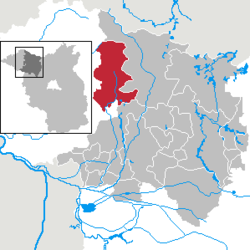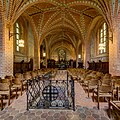Heiligengrabe | |
|---|---|
 Church in Grabow | |
Location of Heiligengrabe within Ostprignitz-Ruppin district  | |
| Coordinates: 53°09′N12°21′E / 53.150°N 12.350°E | |
| Country | Germany |
| State | Brandenburg |
| District | Ostprignitz-Ruppin |
| Subdivisions | 14 Ortsteile |
| Government | |
| • Mayor (2023–31) | Karl-Friedrich Schült [1] |
| Area | |
• Total | 232.30 km2 (89.69 sq mi) |
| Elevation | 75 m (246 ft) |
| Population (2022-12-31) [2] | |
• Total | 4,376 |
| • Density | 19/km2 (49/sq mi) |
| Time zone | UTC+01:00 (CET) |
| • Summer (DST) | UTC+02:00 (CEST) |
| Postal codes | 16909 |
| Dialling codes | 033962 |
| Vehicle registration | OPR |
| Website | www.heiligengrabe.de |
Heiligengrabe is a municipality in the Ostprignitz-Ruppin district, in Brandenburg, Germany.



















